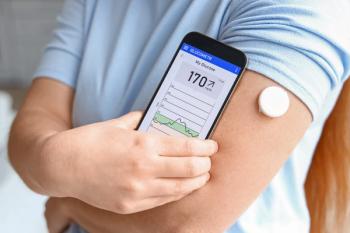
Direct-to-Consumer Pharmacies May Reduce Total Prescription Price for Neurological Medication
DTC pharmacies offer significant savings on total medication costs for neurological drugs, but out-of-pocket expenses remain high for insured patients.
Direct-to-consumer (DTC) pharmacies could reduce total prescription drug costs but not out-of-pocket costs, according to study results published in JAMA Network Open. The investigators specifically explored the cost of neurological medication in DTC business models compared with coverage from commercial insurance plans.1
“We found that the direct-to-consumer pharmacy commonly had lower total costs, in some cases much lower, for commonly used generic neurologic medications (except for diflunisal, nortriptyline, and fludrocortisone),” the study authors said.1 “However, even when total costs were much lower, this did not translate into lower OOP [out-of-pocket] costs for patients with commercial insurance.”
DTC pharmacies often sell drugs that have a generic alternative, usually at lower prices than traditional retail pharmacies, but not all drugs are available. In study data published in the Journal of General Internal Medicine, investigators showed that 94 of 118 expensive generic dosage forms were available at 1 or more DTC pharmacies. Of the 52 common generic dosage forms, all but 1 were available. Amazon Pharmacy, Mark Cuban Cost Plus Drug Company, Health Warehouse, and Costco had the lowest expensive generic costs, respectively. However, the investigators noted that many of the most expensive generic drugs are unavailable at DTC pharmacies.2
Online pharmacy and telepharmacy have been more convenient methods for medication management to enhance care, according to authors of a study in the Journal of the Neurological Sciences. In outpatient settings, teleneurology showed increased access to specialized care for patients in rural locations, and in the findings from this study, investigators showed that telemedicine is also feasible in underserved populations in urban areas. Further, they stated that there are opportunities to expand these services to address barriers to medication adherence.3
In DTC pharmacies, the model could lower prices of medication by selling directly to patients because it could bypass the need for insurance and pharmacy benefit managers. In the current study, investigators evaluated pharmacies that mainly carried generic medications, and they compared the 2024 neurological costs with commercial plans with DTC pharmacies. Investigators used a retrospective cross-sectional study that compared Mark Cuban Cost Plus Drug Company with commercial insurance plan costs of various neurological medications.1
Data from commercial insurance plan costs were gathered from 2012 to 2021, including Merative Market Scan commercial and Medicare supplemental databases. Data on DTC pharmacy were obtained on December 10, 2024, and investigators used a 3-month supply for each medication. Patients with a diagnosis of epilepsy, multiple sclerosis, Parkinson disease peripheral neuropathy, dementia, Alzheimer disease, amyotrophic lateral sclerosis, transthyretin amyloidosis, Duchenne muscular dystrophy, Huntington disease, myasthenia gravis, migraine or headache, orthostatic hypotension, tardive dyskinesia, or spinal muscular atrophy were all included.1
Of 79 neurological medications, investigators included 33 that were available for purchase through DTC pharmacies. The results showed that DTC pharmacy out-of-pocket costs were approximately 75% higher, but total costs were 413% lower than commercial insurance plans. Medications with the highest insurance plan annual out-of-pocket costs were teriflunomide ($286), droxidopa ($238), fingolimod ($240), dimethyl fumarate ($207), glatiramer acetate ($203), and tetrabenazine ($172) in 2024; similarly, the total costs were $11,739, $11,618, $8394, $6698, $6759, and $5040, respectively. For DTC, the most expensive medications were glatiramer acetate ($24,186), fingolimod ($2185), and cyclosporine ($2185), with the remaining medications being less than $635 annually.1
“For most of the neurologic medications observed, the direct-to-consumer pharmacy total cost is estimated to be less than that of commercial insurance plans,” the study authors concluded.1 “The largest aggregate total cost savings were for teriflunomide, fingolimod, and dimethyl fumarate, with aggregate savings estimated at a minimum of $11 million each by using the direct-to-consumer pharmacy instead of commercial insurance plans at a retail pharmacy.”
READ MORE:
Ready to impress your pharmacy colleagues with the latest drug information, industry trends, and patient care tips? Sign up today for our
REFERENCES
1. Gusovsky Chevalier AV, Lin CC, Kerber K, Reynolds EL, Callaghan BC, Burke JF. Neurologic medication costs in a direct-to-consumer pharmacy vs commercial insurance plans. JAMA Netw Open. 2025;8(8):e2527476. doi:10.1001/jamanetworkopen.2025.27476
2. Lalani HS, Tessema FA, Kesselheim AS, Rome BN. Availability and cost of expensive and common generic prescription drugs: a cross-sectional analysis of direct-to-consumer pharmacies. J Gen Intern Med. 2024;39(12):2187-2195. doi:10.1007/s11606-024-08623-y
3. Li H, Naqvi IA, Tom SE, Almeida B, Baratt Y, Ulane CM. Integrating neurology and pharmacy through telemedicine: a novel care model. J Neurol Sci. 2022;432:120085. doi:10.1016/j.jns.2021.120085
Newsletter
Pharmacy practice is always changing. Stay ahead of the curve with the Drug Topics newsletter and get the latest drug information, industry trends, and patient care tips.




































































































































